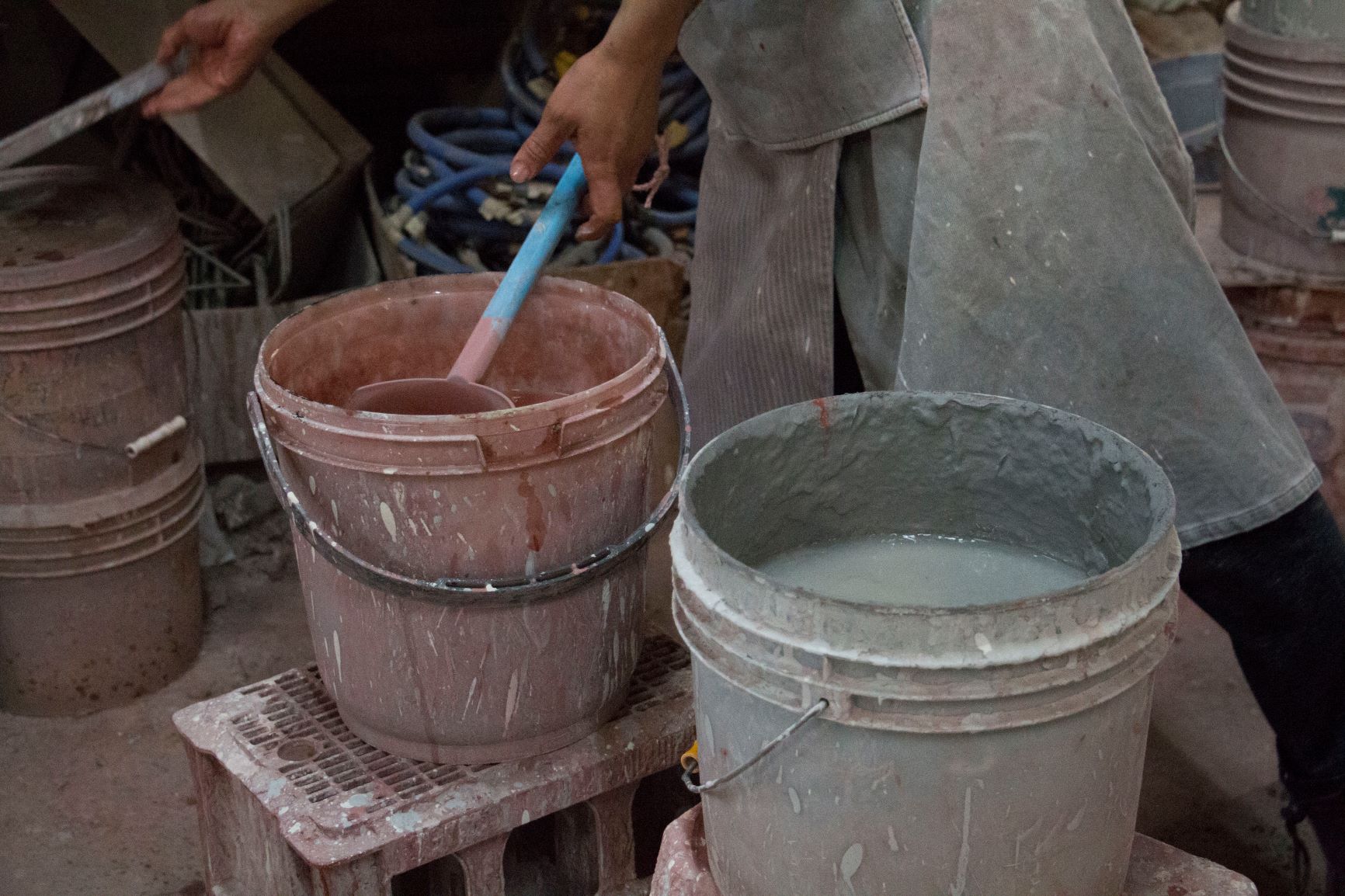釉薬とは
陶磁器の表面を覆っているガラス状の被膜が釉薬、または釉と呼ばれるものです。これはガラスと同じように硬く、耐酸・耐アルカリの優れた性質をもっています。
釉薬を掛けることを施釉といい、これによって器は硬度を増し、また透水性がなくなって水もれや油じみを防ぐことができます。
施釉は、こうした実用的な目的のほかに、色と光沢による装飾的な役割も果たします。
釉薬の始まりは、薪の灰が窯の中の器にかかり、それが高温で溶け、ガラス質になって付着した灰釉で、偶然見つけられました。
釉薬の種類は本当にさまざまですが、基本となる成分によって灰釉、長石釉、鉛釉の3つに分類されます。
これらに鉄や銅などの金属を加えていろいろな色の釉薬を作り出します。生地に掛けた釉薬はその色のままに発色するわけではありません。
釉薬や生地に含まれているわずかな金属が、窯の中の炎によっていろいろな化学変化を起こして発色します。
その炎は窯の中の空気、つまり酸素の多少で決まります。
生地や釉薬に鉄分が含まれている場合、酸素の供給が少ない還元炎なら青く、多い酸化炎なら黄色にという具合に発色します。
同じ釉薬を使っても、釉薬や生地の成分の微妙な違い、施釉量、焼成法、燃料といったさまざまな条件で発色の仕方が異なるという奥深さが、今日の焼物の多彩な表現を可能にしたともいえます。

